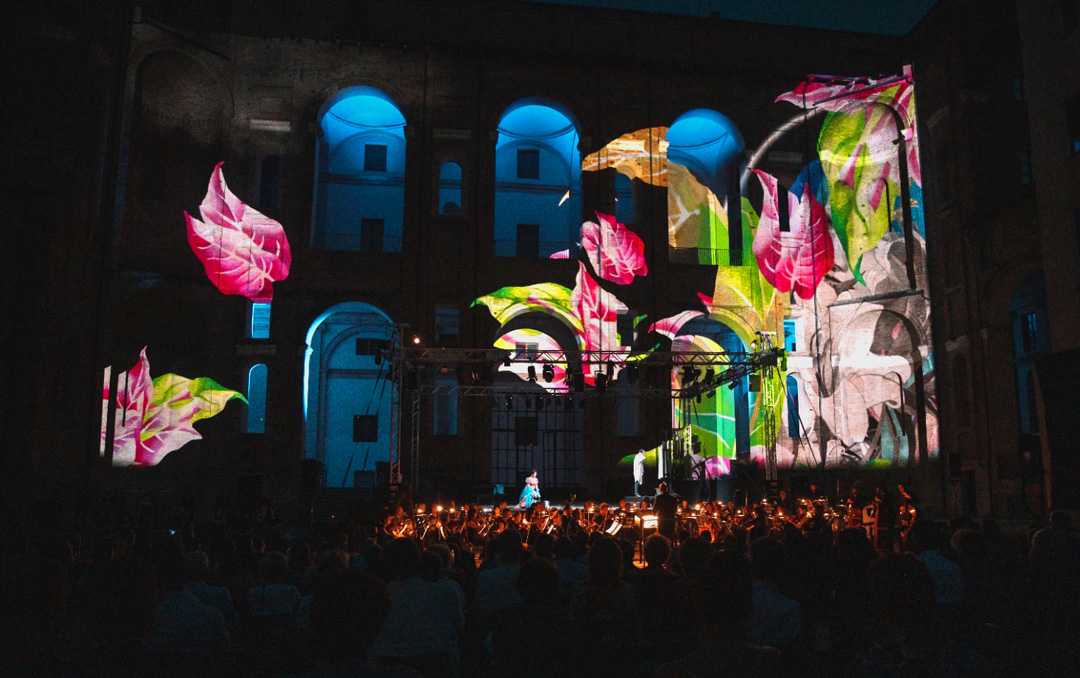TiMax processing for Tosca in Piacenza
- Details

Complementing TiMax’s sympathetic spatial amplification and to ensure complete audience immersion, impressive virtual scenography was video-mapped onto the imposing façade of the building.
Federico Bianchi, designed the multichannel d&b sound system, drove the TiMax SoundHub processor and mixed the show on a DiGiCo console. With social-distancing maximised to ensure a Covid-safe environment for performers, musicians and the audience, positioning of the distributed loudspeaker system was inevitably challenged by an unconventional stage set up. This led to comparatively irregular speaker positions which TiMax nevertheless stitched together into a seamless, object-based, immersive soundfield.
Whilst Bianchi concedes that covering the wide audience area was the biggest difficulty, the on-stage spacing was also challenging to the sound design. A 55-piece orchestra was positioned in front of the opera performers on the main stage, whilst a large choir was positioned to the side.
Bianchi said, “The non-traditional, wide spacing of the three musical sources forced me to find solutions to keep each element blended and in perfect timing each other. It would have been impossible without TiMax to guarantee localisation and intelligibility for everyone in the venue.”
The main system comprised five d&b point-source speakers distributed to cover the width of the stage, assisted by five front fills and four sub bass units. Three delay speakers provided supporting spatial reinforcement for the last rows. A further four anchor speakers were added to the front stage truss between the opera singers on the main stage and the orchestra to augment the on-stage voices and their precise localisation. To subtly enhance the immersive mix as well as to create environmental spatial reverb, eight surround speakers were positioned at the sides and rear of the audience.
It is notable that the use of amplification was originally resisted by the producers for fear of it creating an unnatural-sounding performance, but ultimately the authentic and transparent localisation and immersion created by Federico Bianchi’s TiMax spatial mix met with everyone’s full approval.












